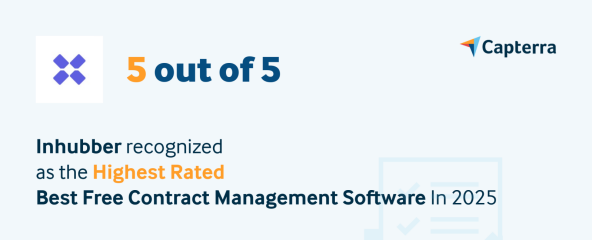Inhubber signature can sign any file format – Excel spreadsheets, videos, photos, but also zip folders in a GDPR compliant manner.
With the Regulation on Electronic Identification and Trust Services for Electronic Transactions in the Internal Market of the European Union – in short: eIDAS Regulation, the exchange of digital signatures has been uniformly regulated throughout the EU since 2016. The eIDAS Regulation entered into force on 8 August 2014 through publication in the Official Journal of the EU. Businesses can benefit from the advantages of digital signatures within the EU.
The eIDAS Regulation specifies which requirements must be fulfilled technically in order for an
electronic signature to be legally secure. Only the term electronic signature is legally defined in
the eIDAS Regulation.
eIDAS recommends that companies that need a high level of security in their digital transactions and
information exchange use advanced or qualified electronic signatures. This is because it is the only
type of signature that has the same legal value as a handwritten signature.
What types of electronic signature are there?
here are 3 types of electronic signatures: the simple, the advanced and the qualified electronic signature. According to European law, the simple and the advanced signature allow the text form. A simple electronic signature can be used to sign around 80 percent of all contracts. The difference between the simple and the advanced digital signature is that with the simple signature you do not have to prove your identity. With the advanced signature, the signatory must identify and register himself and two-factor authentication is required.
A qualified signature is required for fixed-term contracts such as employment contracts and tenancy agreements, which must be made in writing according to the law. It has the same legal effect as a handwritten signature. This can be achieved with a video-ident procedure, for example.
Simple electronic signatures (EES)
- Text form within the meaning of §126b BGB
- Admissible in court
- Very easy to use
- One-factor authentication
Advanced electronic signatures (FES)
- It is uniquely assigned to the signatory.
- It enables the identification of the signatory.
- It is created using electronic signature creation data that only the signer can use.
- It is linked to the data in such a way that a subsequent change is visible.
- It complies with text form as defined by §126b BGB and is admissible in court.
- It offers increased security through two-factor authentication
Integrity and authenticity are guaranteed if the requirements for FES are met. FES may not be legally rejected just because they are in electronic form. Properly implemented FES are equivalent to a traditional handwritten signature. If the validity of FES is questioned, the burden of proof lies with the signatory.
Qualified electronic signatures (QES)
A QES is an advanced electronic signature created by a “qualified signature creation device” and based on a qualified certificate for electronic signatures. The technical requirements for QES are much higher. You have to be certified as a provider. A qualified certificate can only be obtainedfrom a certification authority that is accredited as a Qualified Trust Service Provider (QTSP).
According to the eIDAS requirements, the system must ensure, among other things, that:
- Signature creation data is unique and may only occur once.
- Signature creation data cannot be derived with sufficient certainty and are securely protected against forgery
- Signature creation data can be securely protected by the legitimate signatory against use by others.
- The generation or management of electronic signature-creation-data on behalf of a signatory may only be performed by a qualified trust service provider.
- only qualified trust service providers may manage electronic signature creation data.
The QES corresponds to the written form as defined in § 126 BGB (German Civil Code) and has the same legal effect as a handwritten signature. Thus, the QES has an increased probative value in court and performs an ID verification by TSP (electronic trust services).
EU Member States are obliged to recognise the validity of a QES created with a qualified certificatefrom another Member State. Furthermore, a QES is a legal equivalent to a handwritten signature.
The Qualified Electronic Signature is only required for
- Fixed-term employment contracts
- Tenancy agreements for a fixed term or with graduated rent
- Notices of termination and termination agreements
- Agreements on post-contractual non-competition clauses
- To date, there are contracts that cannot be signed digitally by law.
Contracts that cannot be digitally signed include those that can only be signed before a notary.
Examples of these contracts are:
- Handwritten will
- Acquisition of real estate
- Termination of an employment contract
Two points are particularly important for this. Firstly, the agreed form clause must be presented, showing that the conclusion of the contract was requested electronically. Secondly, the contracting party must be able to show that the parties signed the contracts electronically and that the form was observed. An advanced electronic signature, as provided by Inhubber, is always better in any case if disputes arise later.





